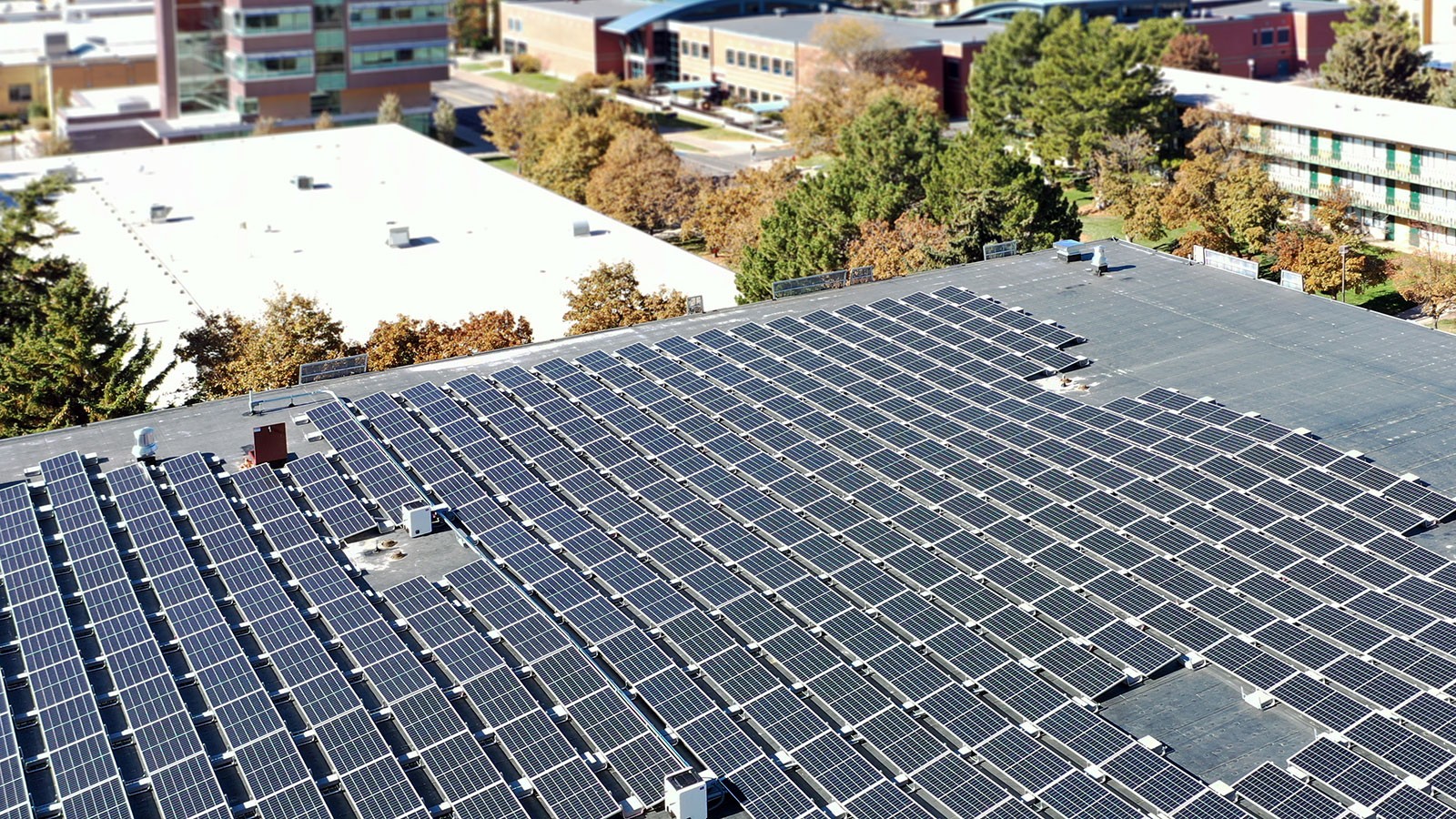Silver Linings & Green Energy: Progress Toward USU's Carbon Neutrality Goal in New Footprint Report
By Lael Gilbert |
A notable accomplishment toward USU carbon neutrality was the installation of a 158-kilowatt solar panel array, mounted atop the Gateway Parking Terrace.
Rather than asking how many people it takes to change one lightbulb, Alexi Lamm wonders how many light bulbs one person can actually change. Over the last two years, Lamm, sustainability program manager for Utah State University, has watched the hard work of USU lighting teams led by Kevin Van Dyke as they swapped old, high-energy bulbs with energy-efficient LED bulbs across USU campuses statewide. With coordination from Zac Cook, facilities energy manager, the teams traded out more than 142,000 bulbs, moving the university one step closer toward the goal of net carbon neutrality by 2050.
The effort was actually assisted by pandemic-induced changes to work patterns, Lamm said, a silver lining to an otherwise tough year.
“With fewer people on campus, teams were able to swap out bulbs more quickly without disrupting other work,” she said. “Getting this far in two years was faster than we expected.”
The project reached 95% completion in fiscal year 2021, according to the recently released greenhouse gas inventory, helping to realize a savings of nearly 6 million kilowatt hours and a carbon emission reduction of 3,500 metric tons annually.
Alongside this type of on-the-ground progress, USU campuses also reported a few spectacular leaps in carbon reductions, but Lamm isn’t celebrating just yet. Emissions declined 15.5% after falling 12% the year before — COVID’s effects on transportation largely drove reductions through canceled meetings and restrictions on travel. University gasoline use dropped from over 200,000 gallons in fiscal year 2019 to more than 150,000 gallons in fiscal year 2021. Personal reimbursed miles dropped from 2.7 million miles to under 950,000 miles in 2021. USU-funded air travel miles plummeted from over 16 million to a little over 500,000.
The pandemic gave the world a crash course in online meeting skills, whether they wanted them or not, Lamm said. Even as institutions creep back to patterns of normal interactions, those online habits could spur some conferences and meetings to remain remote, a net benefit to the environment.
This transition time back to normal patterns is also a great time to take stock of personal travel choices, she said. People may consider making some pandemic-era changes permanent in order to reduce their carbon footprint.
“If you have an out-of-state meeting, perhaps be thoughtful about combining trips to reduce travel, or accomplishing the same tasks online.”
Another notable accomplishment toward campus carbon neutrality is the installation of a 158-kilowatt solar panel array funded through the president’s office, Lamm said. The array, mounted atop the Gateway Parking Terrace, increases USU’s solar capacity by over 50% and provides enough energy to power 26 homes, avoiding 151 metric tons of carbon each year.
“Projects like these can have a huge cumulative effect over time for sustainability,” said Chris Luecke, Dean of the Quinney College of Natural Resources. “It’s been impressive to see the commitment the university has to redefining the way our community uses energy resources.”
USU’s sustainability and energy management programs have upcoming plans to empower employees with information for purchases with university dollars. They are developing an informational carbon-cost calculator which will be part of the process of purchasing larger items through the university, such as cars and equipment. More information about the cost of operations over the lifetime of a product can help consumers make better decisions about buying the most efficient versions, Lamm said, a win-win for both consumers and energy reduction.
“We’re committed every year to taking practical and innovative steps toward reducing our emissions,” Lamm said. “This greenhouse gas inventory is one way to hold the institution accountable to the goals we’ve set for ourselves.”
WRITER
Lael Gilbert
Public Relations Specialist
Quinney College of Natural Resources
435-797-8455
lael.gilbert@usu.edu
CONTACT
Alexi Lamm
Sustainability Coordinator
Utah State University
(435) 797-9299
alexi.lamm@usu.edu
TOPICS
Environment 263stories Energy 102stories Conservation 82storiesComments and questions regarding this article may be directed to the contact person listed on this page.







